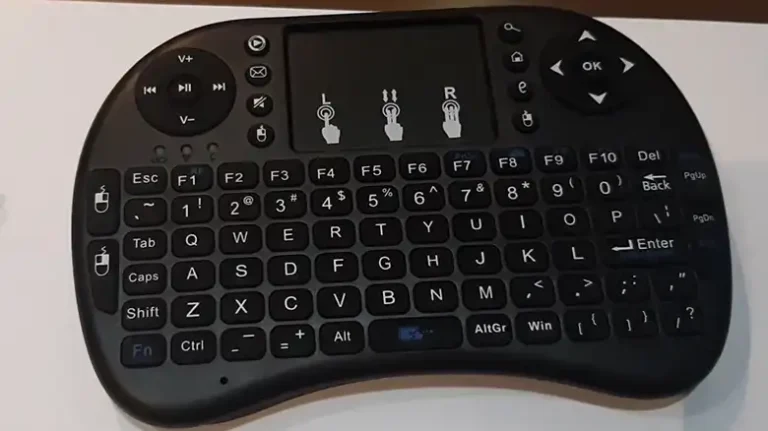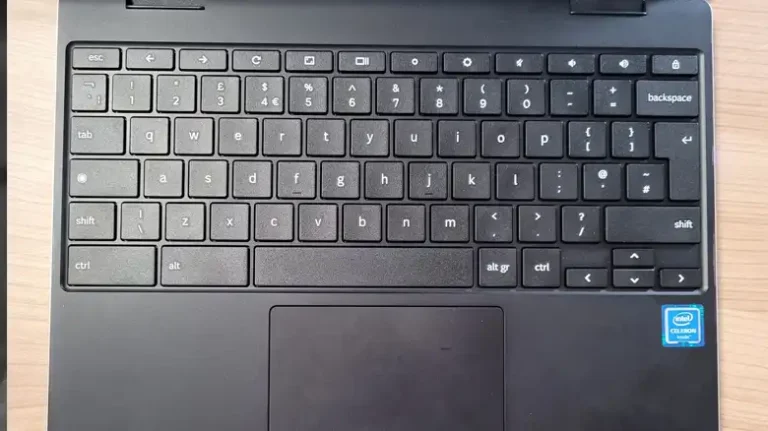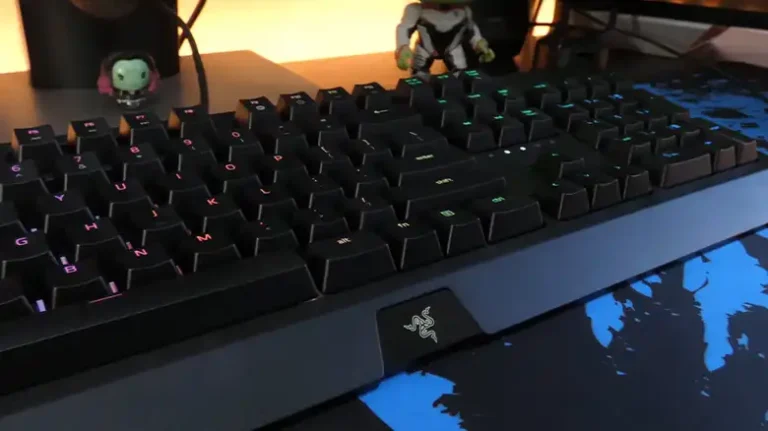Microsoft Wireless Keyboard Not Working | Easy Fixes for You
Microsoft wireless keyboards are known for their convenience and versatility, but like any electronic device, they can encounter issues from time to time. If you find that your Microsoft wireless keyboard is not working as expected, don’t worry. This troubleshooting guide will help you identify and resolve common problems.
We will divide the solution in a step-by-step manner according to different issues and how to fix them. So, if your Microsoft wireless keyboard has been acting up, read on.

How to Fix Microsoft Wireless Keyboard When It’s Not Working
Here are the most common reasons for which your Microsoft keyboard might not work and how you can fix them.
Batteries
Issue: The keyboard is unresponsive.
Solution:
- Open the battery compartment on the back of the keyboard and check the batteries. Make sure they are inserted correctly, following the polarity indicated inside the compartment.
- If the batteries are low or dead, replace them with new, high-quality batteries. Alkaline batteries are a good choice for wireless keyboards as they provide stable power.
- After replacing the batteries, wait a few seconds to see if the keyboard becomes responsive. Sometimes, it may take a moment to establish a connection with the computer.
Wireless Receiver (USB)
Issue: No response when typing.
Solution:
- Verify that the wireless USB receiver is securely plugged into a working USB port on your computer. Ensure it’s not connected through a USB hub or extension cable as this can sometimes cause connectivity issues.
- If you’re uncertain about which USB port is working, try plugging in another USB device, such as a mouse, to test the port.
- To reconnect the keyboard to the receiver, follow these steps:
- Press and hold the connect button on the receiver (if available).
- Simultaneously press and hold the connect button on the keyboard.
- Release both buttons. The LED on the receiver and keyboard should blink while they establish a connection.
Bluetooth Connectivity
Issue: Keyboard isn’t connecting via Bluetooth.
Solution:
- Make sure Bluetooth is enabled on your computer. You can typically find this in your computer’s settings or system preferences.
- To put the keyboard in pairing mode:
- Turn off the keyboard.
- Press and hold the Bluetooth pairing button (usually indicated by a Bluetooth icon) for a few seconds until the LED indicator starts blinking.
- On your computer, search for available Bluetooth devices and select your keyboard when it appears in the list.
- Follow any on-screen prompts to complete the pairing process.
Restart Your Computer
Issue: The keyboard works intermittently.
Solution:
- Save any work you have open, then restart your computer. This can often clear up temporary connectivity issues and refresh the Bluetooth or USB connections.
- After the computer has restarted, test the keyboard to see if it’s functioning properly.
Driver and Software Updates:
Issue: The keyboard is not recognized by the computer.
Solution:
- Ensure your operating system is up to date. Check for and install any available updates.
- Visit the official Microsoft website and download the latest drivers or software for your keyboard model, if applicable.
- Install the drivers or software and follow any setup instructions provided.
Interference
Issue: Frequent disconnections or erratic behavior.
Solution:
- Keep your wireless keyboard away from devices that can cause interference, such as cordless phones, Wi-Fi routers, and microwave ovens. These devices can disrupt the wireless signal between your keyboard and computer.
Physical Inspection
Issue: Keys are sticking, or there’s physical damage.
Solution:
- Carefully inspect the keyboard for any physical damage or debris that might be causing keys to stick or preventing proper operation.
- If you find debris or dust, gently clean the keyboard using compressed air or a soft brush. For spills, disconnect the keyboard, turn it upside down to drain any liquid, and allow it to dry completely before using it again.
FAQs (Frequently Asked Questions)
My keyboard was working fine yesterday, but now it’s not responding. What could be the issue?
Start by checking the batteries. If they’re low or dead, replace them. Also, try restarting your computer, as this can often resolve connectivity issues.
How do I reconnect my keyboard to the wireless USB receiver?
Refer to your keyboard’s user manual for specific pairing instructions. Typically, you’ll need to press a button on the receiver and the keyboard simultaneously.
Can I use my Microsoft wireless keyboard on multiple devices?
Some Microsoft wireless keyboards support multi-device pairing. Refer to your keyboard’s manual to see if it has this feature and how to use it.
What should I do if my keyboard doesn’t work on another computer?
If your keyboard doesn’t work on another computer, it might be a hardware issue with the keyboard itself. Contact Microsoft support for further assistance or consider getting a replacement.
Final Thoughts
A Microsoft wireless keyboard that’s not working can be frustrating, but most issues can be resolved with some simple troubleshooting steps. By following the solutions outlined in this guide and referring to your keyboard’s user manual, you can often get your wireless keyboard back up and running smoothly. If all else fails, don’t hesitate to reach out to Microsoft’s customer support for additional help.
![[4 Fixes] Lenovo Flex 5 Keyboard Not Working](https://keyboardhunter.com/wp-content/uploads/2023/08/Lenovo-Flex-5-Keyboard-Not-Working-768x431.webp)



![[Solved] Onn Keyboard Not Working](https://keyboardhunter.com/wp-content/uploads/2023/10/Onn-Keyboard-Not-Working-768x431.webp)
